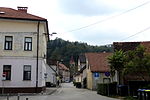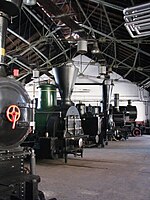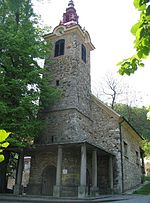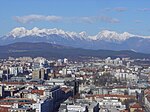Šiška Sports Park

Šiška Sports Park (Slovene: Športni park Šiška) is a multi-purpose sports venue in Ljubljana. The venue includes a main football stadium with outdoor track and field, an athletics hall, two football fields with artificial turf, and tennis courts. The main football stadium is commonly named ŽAK Stadium (Slovene: Stadion ŽAK) and was used for matches in the Slovenian PrvaLiga by NK Ljubljana, NK Interblock and NK Olimpija Ljubljana. Currently, the stadium is used by NK Bravo and ŠD NK Ljubljana. The stadium has a capacity of 2,308 seats and was built in 1930. It is owned by the City of Ljubljana. Previously, it was operated by the Railway Sports Association Ljubljana (Slovene: Železničarsko športno društvo Ljubljana (ŽŠD Ljubljana)).
Excerpt from the Wikipedia article Šiška Sports Park (License: CC BY-SA 3.0, Authors, Images).Šiška Sports Park
Ob kamniški progi, Ljubljana Bežigrad
Geographical coordinates (GPS) Address External links Nearby Places Show on map
Geographical coordinates (GPS)
| Latitude | Longitude |
|---|---|
| N 46.069444444444 ° | E 14.499444444444 ° |
Address
Stadion ŽAK
Ob kamniški progi
1132 Ljubljana, Bežigrad
Slovenia
Open on Google Maps









